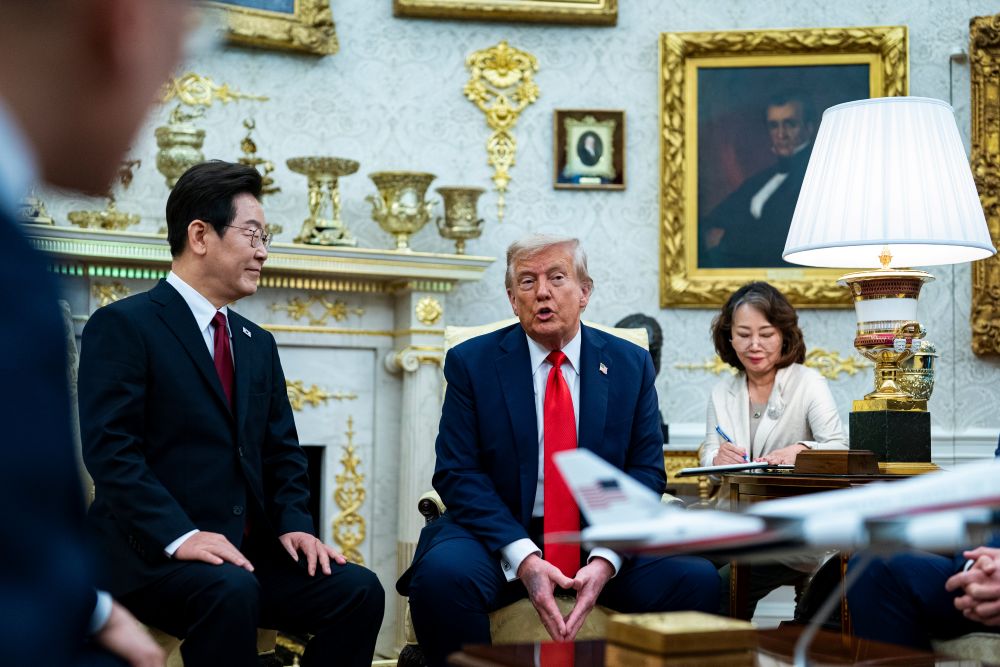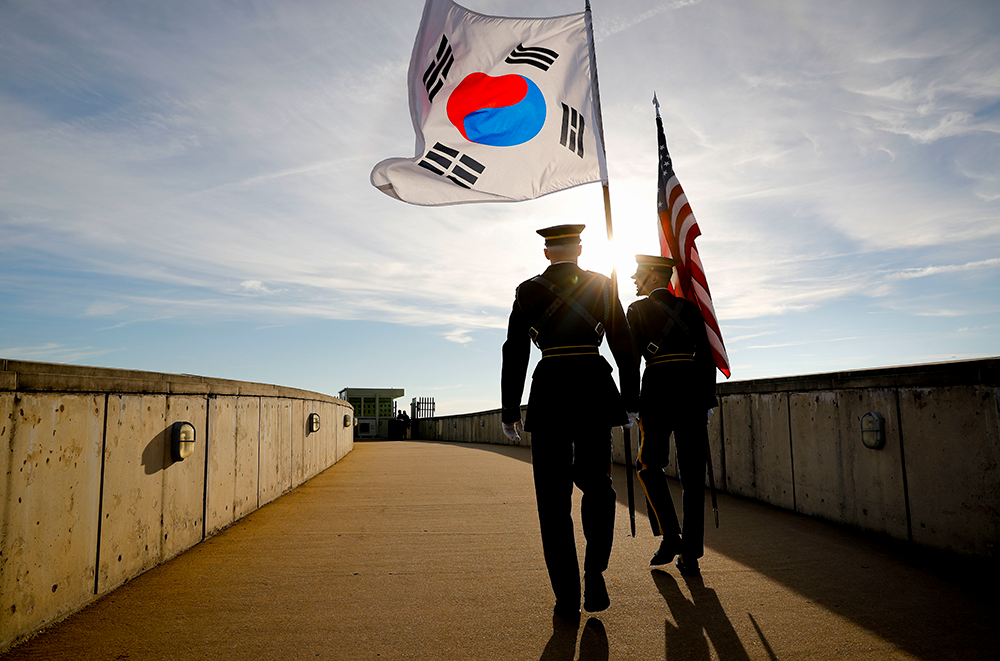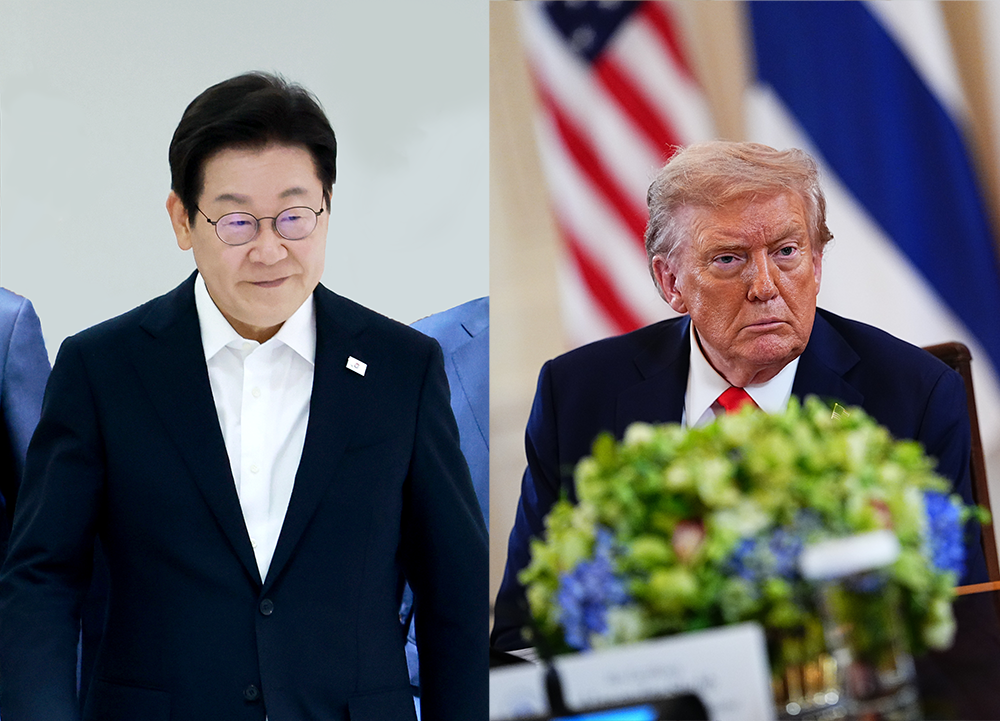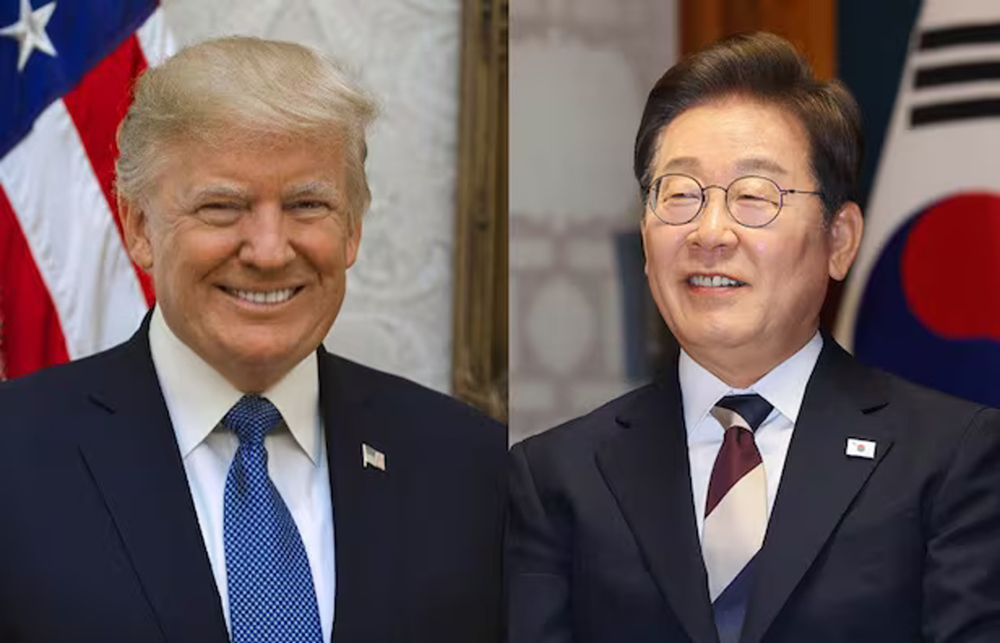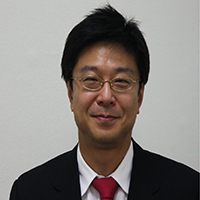
- #South Korea
- #US Foreign Policy
- #US-ROK Alliance
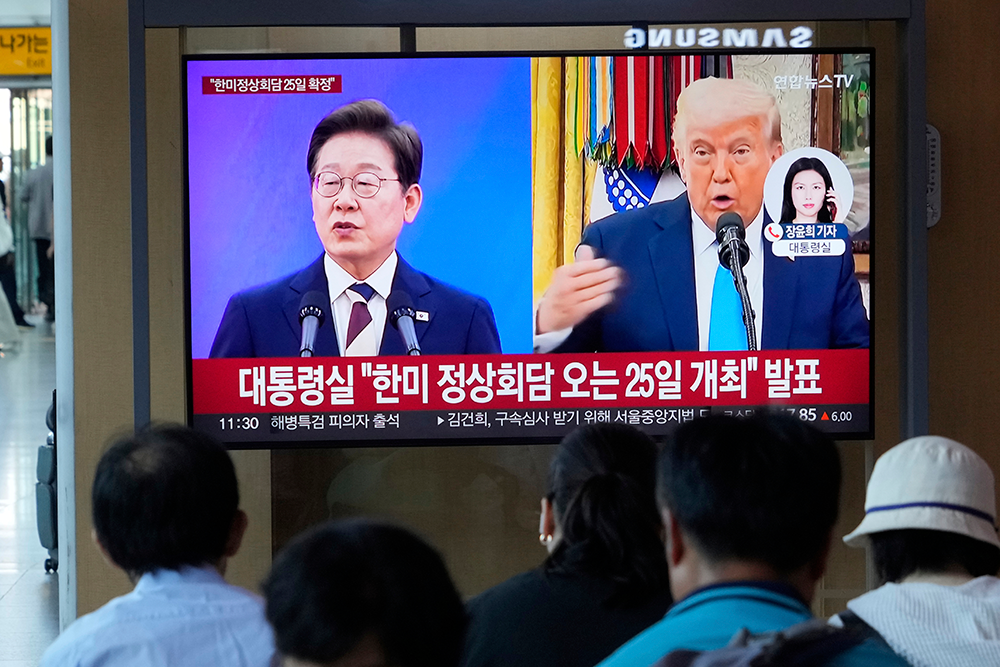
Key Takeaways:
- Trump is expected to demand a massive increase in South Korea's financial contributions to defense, up from the current 2.6% of GDP to 3.8%. South Korea should shift the narrative from a simple transaction to a strategic partnership to deal with Trump's demands.
- The summit offers an opportunity to modernize the U.S.-ROK alliance for the shifting Indo-Pacific landscape. South Korea must navigate this dynamic carefully to avoid antagnoizing China, especially amidst the risk that upgrades to the alliance are perceived as a "counter-China" initiative.
- South Korea needs to draw red lines on non-negotiables, while being open to solutions that serve mutual interest. The goal should be to recalibrate the relationship towards a more balanced partnership of "strategic co-leadership" rather than a patron-client dynamic.
On August 25, President Lee Jae-myung and President Donald
Trump will convene their first summit in Washington, D.C. This meeting marks a
critical juncture in the ROK-U.S. alliance, offering both nations an
opportunity to recalibrate their bilateral relationship across economic,
security, and diplomatic domains. More broadly, the summit may influence the
strategic architecture of East Asia and the evolving Indo-Pacific framework
that the U.S. is actively shaping.
The summit’s economic agenda will center on the
implementation of a recently concluded $350 billion investment and
tariff-reduction agreement. While this deal is significant, the more complex
and consequential discussions will likely revolve around security-related
issues—namely increased cost-sharing for U.S. Forces Korea (USFK), expansion of
South Korea’s defense budget, and the modernization of the alliance. These
topics are deeply interconnected and will likely be negotiated as a
comprehensive package.
President Trump is reportedly demanding a ninefold increase
in South Korea’s contribution to USFK, totaling $10 billion annually. This
figure, while politically provocative, should be treated as a starting point
for negotiation. President Lee would be wise to present a holistic account of
South Korea’s existing contributions—both direct and indirect—including base
construction, infrastructure maintenance, land provision, and logistical
support for strategic U.S. assets. By framing the discussion around shared
responsibilities and mutual benefits, Seoul can shift the narrative from
transactional burden-sharing to strategic partnership.
A moderate increase in cost-sharing could be proposed,
accompanied by a request for enhanced strategic cooperation and a reaffirmation
of U.S. commitment to maintaining USFK. This dual-track approach would allow
South Korea to retain leverage while demonstrating goodwill. It also provides
an opportunity to redefine the alliance’s purpose in a way that reflects
current geopolitical realities.
Currently, South Korea’s defense spending stands at
approximately 2.6% of GDP. The Trump administration is pushing for an increase
to 3.8%. While South Korea already ranks among the top ten globally in total
defense expenditure and has cultivated a robust domestic defense industry,
these facts may not resonate with Trump’s political calculus. Rather than
relying solely on quantitative metrics, Seoul should propose channeling any
budget increase into areas that benefit both nations—such as procurement of U.S.-made
weapons systems, joint research and development initiatives, and collaboration
in emerging domains like military artificial intelligence and cybersecurity.
Such proposals would not only address Trump’s emphasis on
economic reciprocity but also strengthen the technological and strategic
interoperability of the alliance. Moreover, they would signal South Korea’s
commitment to contributing meaningfully to regional security, beyond mere
financial transfers.
The modernization of the alliance presents both
opportunities and risks. If framed explicitly as a counter-China initiative, it
could strain South Korea’s delicate diplomatic balance with Beijing. The U.S.–South
Korea alliance and the presence of USFK have increasingly taken on the role of
counterbalancing China’s growing influence in the region. However, South Korea
must tread carefully. Direct references to “China containment” in the summit’s
joint statement would almost certainly provoke diplomatic backlash and
complicate Seoul’s efforts to maintain stable relations with its largest
trading partner.
Instead, the language of the joint statement should
emphasize “regional stability and peace,” framing the Korean Peninsula’s
security as a cornerstone of broader Indo-Pacific stability. This approach
aligns with the original mission of the alliance and preserves the principle of
strategic flexibility. It also allows South Korea to maintain its diplomatic
autonomy while contributing to collective security.
The summit also presents an opportunity to redefine the
strategic purpose of the alliance. While the United States seeks to reorient
its Indo-Pacific posture to address emerging threats, South Korea must ensure
that its own interests are not sidelined. A recalibrated alliance should
reflect mutual respect, shared values, and a recognition of South Korea’s
growing regional role—including its contributions to peacekeeping, humanitarian
assistance, and regional diplomacy.
South Korea should advocate for a more balanced partnership—one
that moves beyond the traditional patron-client dynamic and embraces a model of
strategic co-leadership. This would require both nations to engage in honest
dialogue about their respective priorities and expectations, and to adapt
institutional mechanisms to better reflect contemporary realities.
Domestic political implications must also be considered.
While public support for the alliance remains strong, there is growing scrutiny
over the financial and strategic costs of maintaining such a close relationship
with Washington. Any perceived imbalance could become a flashpoint in domestic
politics, particularly amid rising nationalism and economic uncertainty.
Transparency and public diplomacy will be essential in framing the summit’s
outcomes in a way that resonates with the Korean public.
Economic and security issues will likely be negotiated as a
package. South Korea must maintain principled positions while embracing
adaptive thinking. This means being clear about red lines—such as preserving
strategic autonomy and avoiding entanglement in great-power rivalry—while
remaining open to creative solutions that advance mutual interests.
When dealing with Trump, symbolic diplomacy may also play a
role. Gestures that appeal to his personal style—such as wearing a MASGA (Make
Alliance Stronger Again) hat during a visit to the Philadelphia Naval Shipyard—could
help build rapport and soften the negotiation atmosphere. While such gestures
may seem superficial, they can influence the tone and trajectory of high-stakes
diplomacy.
Ultimately, this summit is not just about transactional
deals or short-term gains. It is about shaping the future of the U.S.–South
Korea alliance in a rapidly changing world. The Indo-Pacific region is becoming
increasingly volatile, with rising tensions, shifting alliances, and emerging
threats. In this context, South Korea must navigate the summit with strategic
clarity and diplomatic finesse.
It must articulate a vision for the alliance that is
forward-looking, inclusive, and resilient—balancing security commitments with
economic interests, and regional aspirations with global responsibilities. And
it must do so with a clear understanding of the stakes involved—not just for
itself, but for the broader region and the international order.
South Korea must also demonstrate strategic imagination—an
ability to anticipate shifts, shape narratives, and build coalitions that
extend beyond the bilateral framework. The alliance must evolve from a reactive
posture to a proactive force for stability and innovation in the Indo-Pacific.
This requires not only policy coordination but also a shared
strategic culture—one that values long-term planning, mutual respect, and
democratic resilience. As the region faces mounting pressure from authoritarian
assertiveness, climate insecurity, and technological disruption, the U.S.–South
Korea alliance must become a platform for collective problem-solving and
principled leadership.
In this moment of uncertainty, South Korea has the
opportunity to lead—not just as a reliable ally, but as a strategic architect
of regional peace. The upcoming summit is a test of that leadership. If Seoul
succeeds in balancing firmness with flexibility, and principle with pragmatism,
it can help shape a new chapter in the alliance—one that reflects not only
shared interests but shared vision. That would be a legacy worth building.

Jaechun Kim holds an M.A. in International Relations and a Ph.D. in Political Science from Yale University. He is currently a professor and the Dean of the Graduate School of International Studies at Sogang University, where he has taught since 2003. He serves as an advisor to South Korea's National Security Office and the Ministry of Unification. Previously, he advised the Ministry of Foreign Affairs and served on various government committees. He is a former Fulbright Fellow at George Washington University and has held leadership roles in the Korean Political Science Association. His research focuses on U.S. foreign policy, international security, and Northeast Asian relations, with recent publications on the ROK-U.S. alliance and Indo-Pacific strategy.
